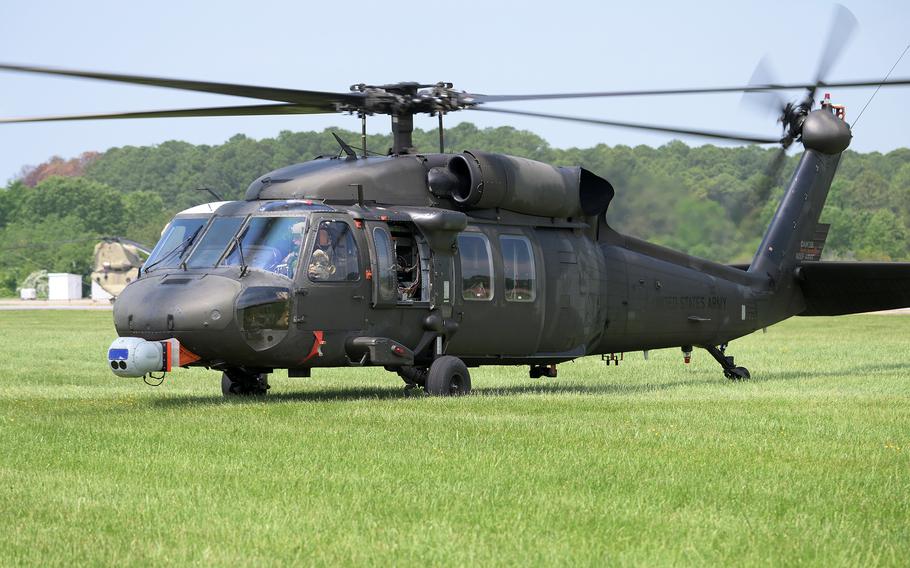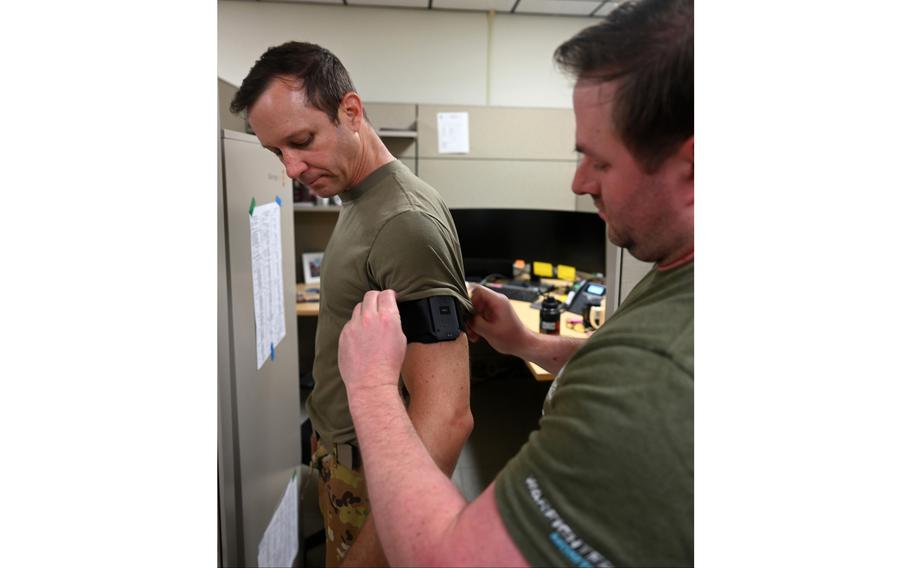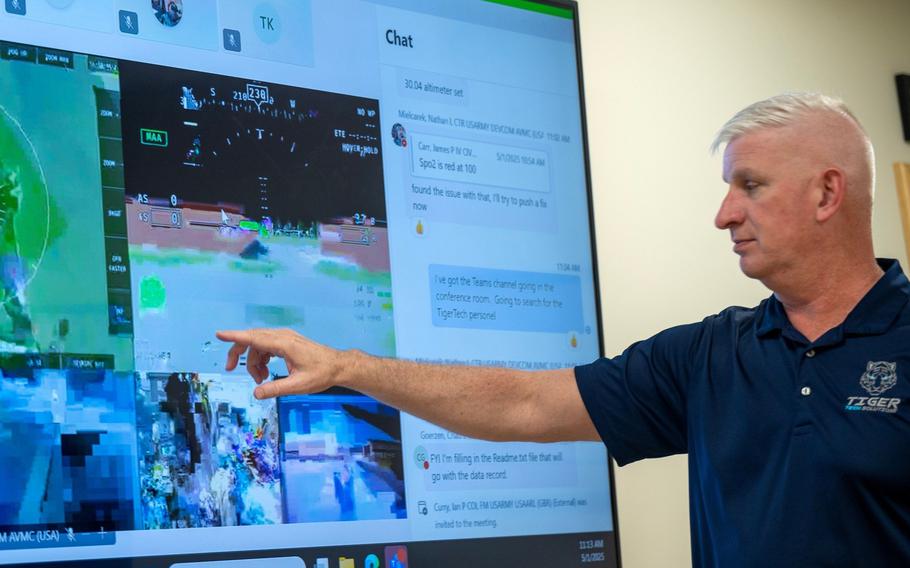
A UH-60 Black Hawk serving as a mobile lab prepares to test an autonomous flight system at Joint Base Langley-Eustis, Va., on May 1, 2025. The system safely returns incapacitated pilots back to base after receiving medical distress signals. (Jose Mejia-Betancourth/U.S. Army)
An Army in-flight system that can detect when a pilot is incapacitated and get the aircraft back to base has passed a key test, giving the service a boost in its quest to develop autonomous technology.
The May test flight at Joint Base Langley-Eustis, Va., paired a medical monitoring device similar to an EKG with an autopilot system in a UH-60 Black Hawk, an Army statement said.
A team from the service’s Combat Capabilities Development Command Aviation and Missile Center used an armband to pick up medical distress from a pilot and safely return the Black Hawk to Felker Army Airfield, test pilot Lt. Col. Greg Sievers said in an interview earlier this month.
On May 1, the Black Hawk took off with Sievers, center test pilot Carl Ott and flight engineer James Carr for the 90-minute flight, according to the statement.
The medical device simulated incapacitation, and the autonomous system checked with the pilots for a response, Ott said. When no response was provided, the aircraft successfully returned to base without human assistance.
The Black Hawk was equipped with autonomous software that receives data from lidar sensors that can detect obstacles and scan landing areas, Ott said.
He added that pairing medical monitoring devices with aircraft controls for supervised autonomy is a requirement of the Army’s next-generation long-range assault aircraft program, which began in 2019 to find a tilt-rotor replacement for the Black Hawk.
The Army intends for the system to be available across all aviation platforms, Ott said.
For the test, which Sievers said was repeated twice with the same result, the autonomous flight system was switched on manually.
The service still needs to figure out when to have the autopilot mode automatically kick in on its own after recognizing that the human operator is unresponsive, Sievers said.
The project began late last year, when the Army Aeromedical Research Lab approached Florida-based Tiger Tech Solutions, a company that makes human performance and health monitoring wearables.
Tiger Tech’s armband sets a baseline of biomarkers for its wearer, from oxygen levels to temperature and heart rate, CEO Harrison Whittels said. It then can send a signal using Bluetooth to the aircraft indicating drastic changes or pilot distress.
“This has never been done in the history of aviation,” Whittels said. “This is the next frontier.”
Once the armband was ready, the lab approached the development command in March to plan the test. The technology is still in the early stages, with more tests of the autonomous system ahead.

Tiger Tech Solutions CEO Harrison Whittels fits a monitoring armband on Army Development Command test pilot Lt. Col. Greg Sievers ahead of a flight at Joint Base Langley-Eustis, Va., on May 1, 2025. (Crista Mary Mack/U.S. Air Force)
But it could be a game-changer for saving lives and aircraft in future wars, said Col. Justin Highley, commander of the center’s Technology Development Directorate.
“At some point, the aircraft could essentially take over and then just come to a hover or go to a holding pattern, or you return to base,” Highley said. “We want to be able to integrate and test (these systems) and figure out what combination of technologies make the most sense to give to our warfighters.”

Rick Whittington, chief operations officer at Tiger Tech Solutions, describes the physiological state of a helicopter pilot in flight during a test at Joint Base Langley-Eustis, Va., on May 1, 2025. An armband the company made was used in the test of an autonomous system that safely landed an aircraft after determining that the pilot was incapacitated. (Crista Mary Mack/U.S. Air Force)